Just because summer’s fading doesn’t mean your garden has to lose its sparkle — or its visitors. In fact, fall might be one of the most overlooked seasons when it comes to supporting pollinators. As temperatures drop and blooms become scarce, bees and butterflies start searching for every last drop of nectar and pollen before winter sets in.
That’s where you come in.
With the right fall-blooming plants, your garden can become a late-season haven — a vital pit stop for tired pollinators. Whether you’re a seasoned gardener or just starting to experiment with planting for wildlife, these blooms are not only beautiful but life-sustaining for your buzzing and fluttering friends.
Ready to turn your garden into a pollinator paradise this fall?
Let’s dive into the 10 fall plants for pollinators that bees and butterflies can’t resist.
1. Goldenrod (Solidago spp.)
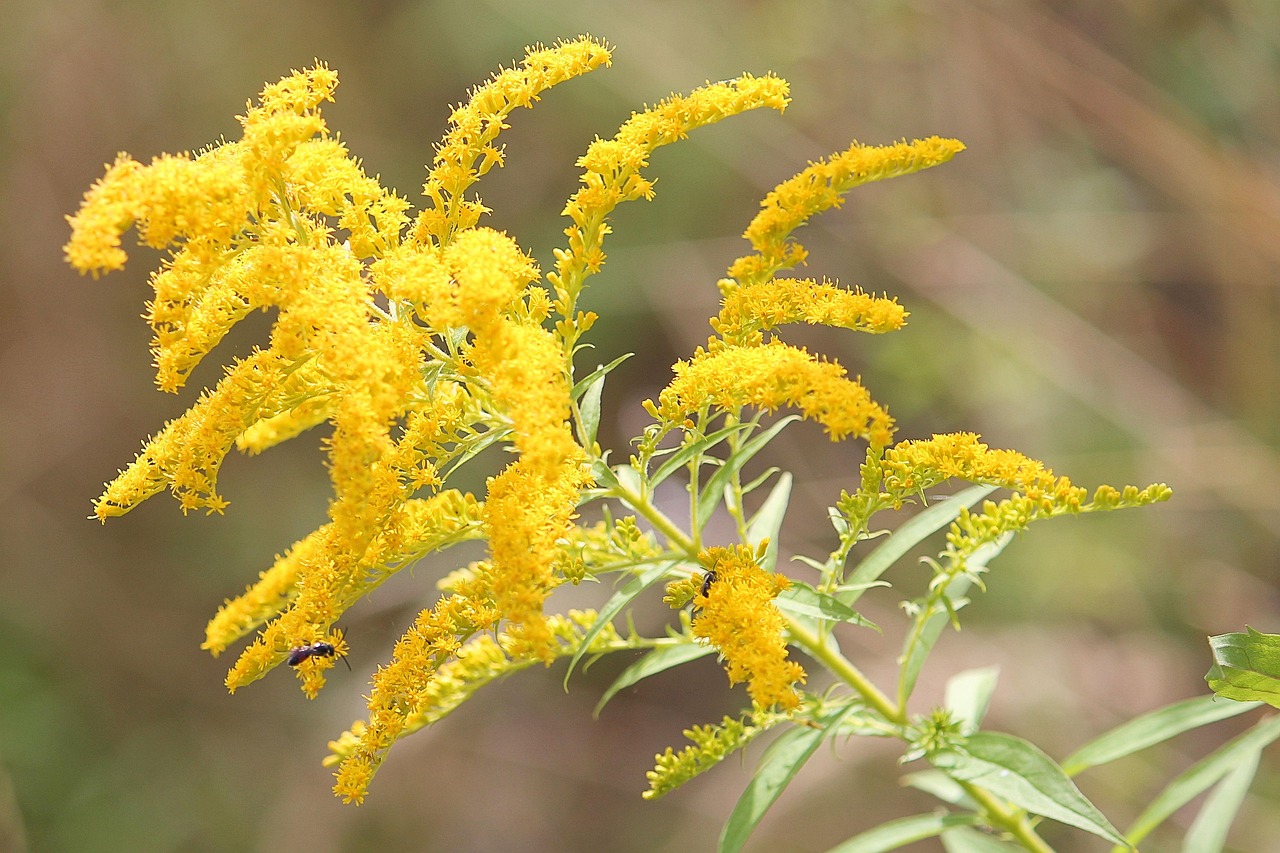
Why Pollinators Love It
Goldenrod is a powerhouse of nectar just when other flowers are closing shop. Its golden plumes attract a wide variety of pollinators, from honeybees to monarch butterflies.
Best Features
- Native to North America
- Blooms from late summer into fall
- Often mistaken as an allergy trigger (it’s not — ragweed is!)
Growing Tips
- Full sun to partial shade
- Well-drained soil
- Drought tolerant once established
2. New England Aster (Symphyotrichum novae-angliae)

Color and Nectar in One
With vibrant purple petals and a sunny yellow center, this native aster lights up fall gardens and provides crucial nectar for migrating butterflies like monarchs.
Why It’s a Fall MVP
- Long blooming period
- Tolerates poor soils
- Loved by bumblebees and butterflies alike
Care Instructions
- Prefers full sun
- Moist, loamy soil works best
- Pinch back in early summer to keep compact
3. Sedum ‘Autumn Joy’ (Hylotelephium spp.)
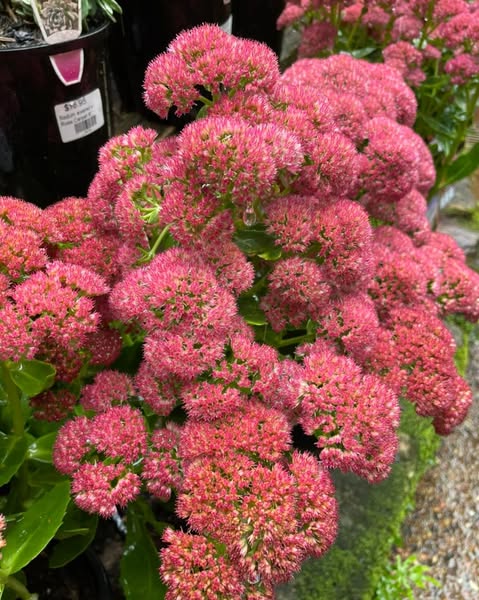
Sculptural Beauty That Bees Swarm To
This succulent-like perennial is as low-maintenance as it is pollinator-friendly. Its flat-topped, pink-to-bronze blooms are bee magnets in September and October.
Why It Shines
- Great for borders and containers
- Thrives in poor, dry soil
- Adds structure even when not in bloom
Grow It Like a Pro
- Full sun is ideal
- Avoid overwatering
- Divide clumps every few years for vigor
4. Joe Pye Weed Plant (Eutrochium purpureum)
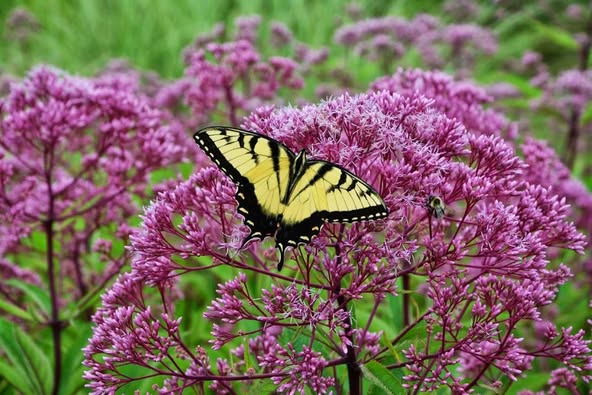
The Gentle Giant of Fall Blooms
Towering and elegant, Joe Pye Weed draws in clouds of butterflies with its clusters of pinkish-purple flowers. It’s a favorite of Eastern Tiger Swallowtails and other large flutterers.
Why It’s Irresistible
- Tall, dramatic form (up to 6 feet!)
- Aromatic vanilla-scented blooms
- Perfect for naturalized or rain gardens
How to Grow
- Prefers moist, rich soil
- Best in full sun to part shade
- Give it space to spread
5. Blanket Flower (Gaillardia pulchella)
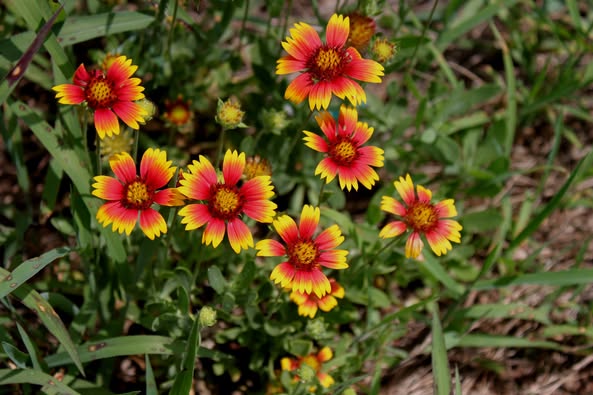
Bold Colors, Bold Attraction
This daisy-like bloom explodes with warm reds and yellows that attract bees by the dozen. Though often grown as an annual, it self-seeds easily.
Standout Traits
- Long blooming — into late fall
- Tolerates heat and drought
- Thrives even in poor soils
Care Details
- Full sun is a must
- Deadhead regularly to extend blooming
- Great in pollinator pathways or wildflower mixes
6. Coneflower (Echinacea purpurea)
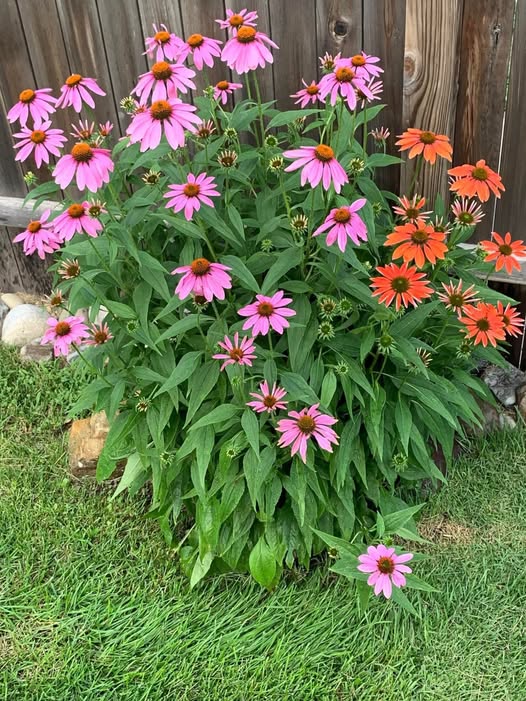
A Four-Season Favorite
While it’s a summer staple, coneflowers often bloom into fall, especially with regular deadheading. Their large, spiky centers are landing pads for bees and butterflies alike.
Why It Stands Out
- Also provides seeds for birds in winter
- Easy to grow and maintain
- Available in various colors beyond classic purple
How to Keep Them Happy
- Full sun preferred
- Well-drained soil
- Leave seed heads for wildlife in winter
7. Helenium (Helenium autumnale)
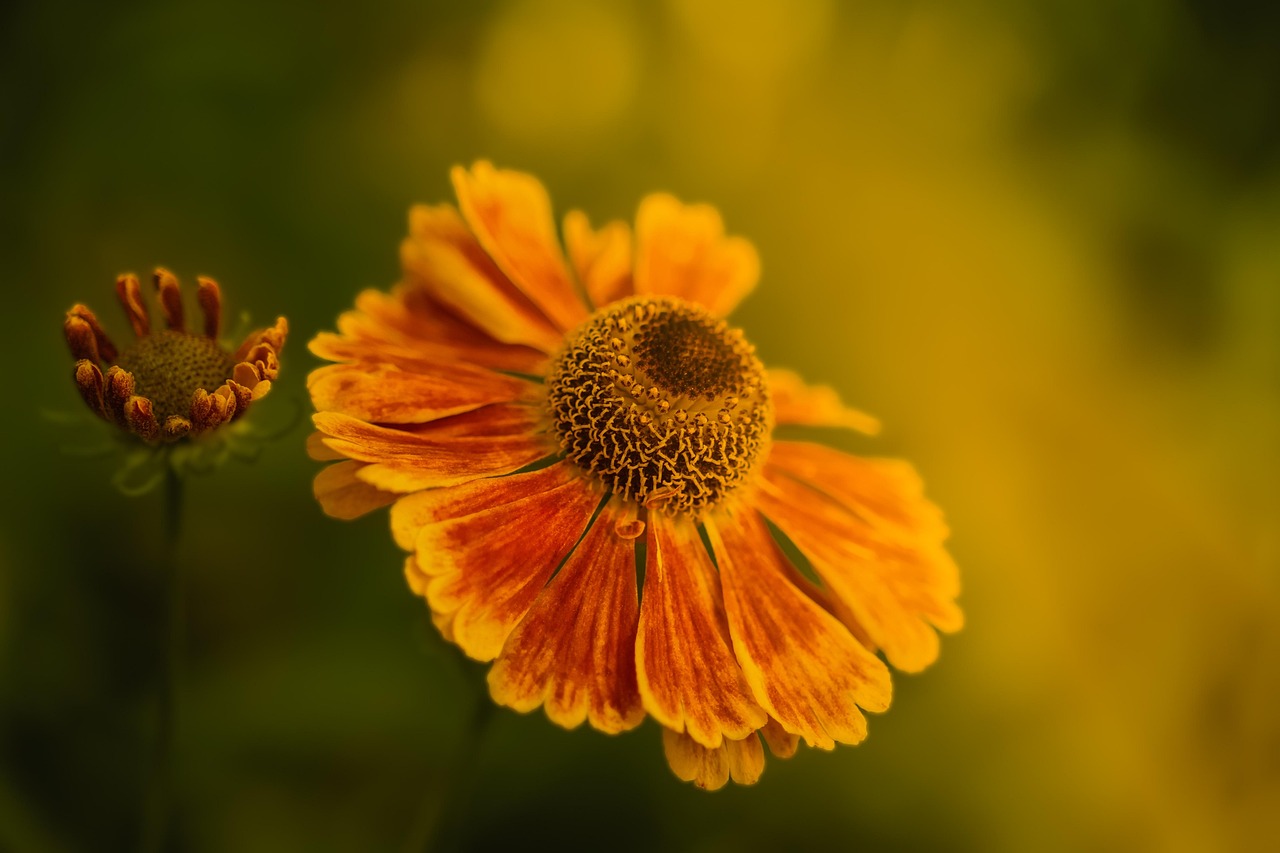
The Hidden Gem of Autumn Gardens
Also known as sneezeweed (don’t worry, it doesn’t cause allergies), Helenium offers rich nectar and eye-popping yellows, oranges, and reds when most other flowers are fading.
Pollinator Perks
- Late-season bloom time
- Great for honeybees and solitary bees
- Easy to blend into cottage-style gardens
Care Essentials
- Full sun
- Moist but well-drained soil
- Pinch in early summer for bushier growth
8. Anise Hyssop (Agastache foeniculum)
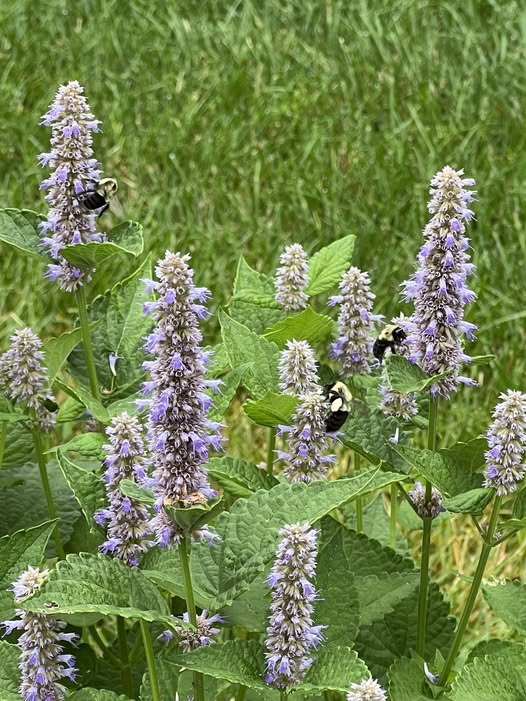
The Aromatic Bee Buffet
This licorice-scented herb is beloved by both gardeners and pollinators. Tall spires of purple-blue flowers attract native bees, hummingbirds, and butterflies.
Why You’ll Love It
- Fragrant foliage deters deer
- Long bloom season, often into frost
- Doubles as a herbal tea plant!
Growing Conditions
- Full sun to light shade
- Dry to medium soil
- Deadhead to prolong blooming
9. Russian Sage (Perovskia atriplicifolia)

Silver Foliage, Blue Blooms, Buzzing Bees
This drought-tolerant beauty isn’t just for summer — it continues blooming well into fall. Its airy blue flowers and silvery leaves offer both beauty and sustenance.
Why It’s a Pollinator Favorite
- Attracts a wide variety of native bees
- Great structural element in fall landscapes
- Deer and rabbit resistant
Planting Tips
- Loves full sun
- Needs well-drained soil
- Cut back in early spring for best shape
10. Tithonia (Mexican Sunflower)
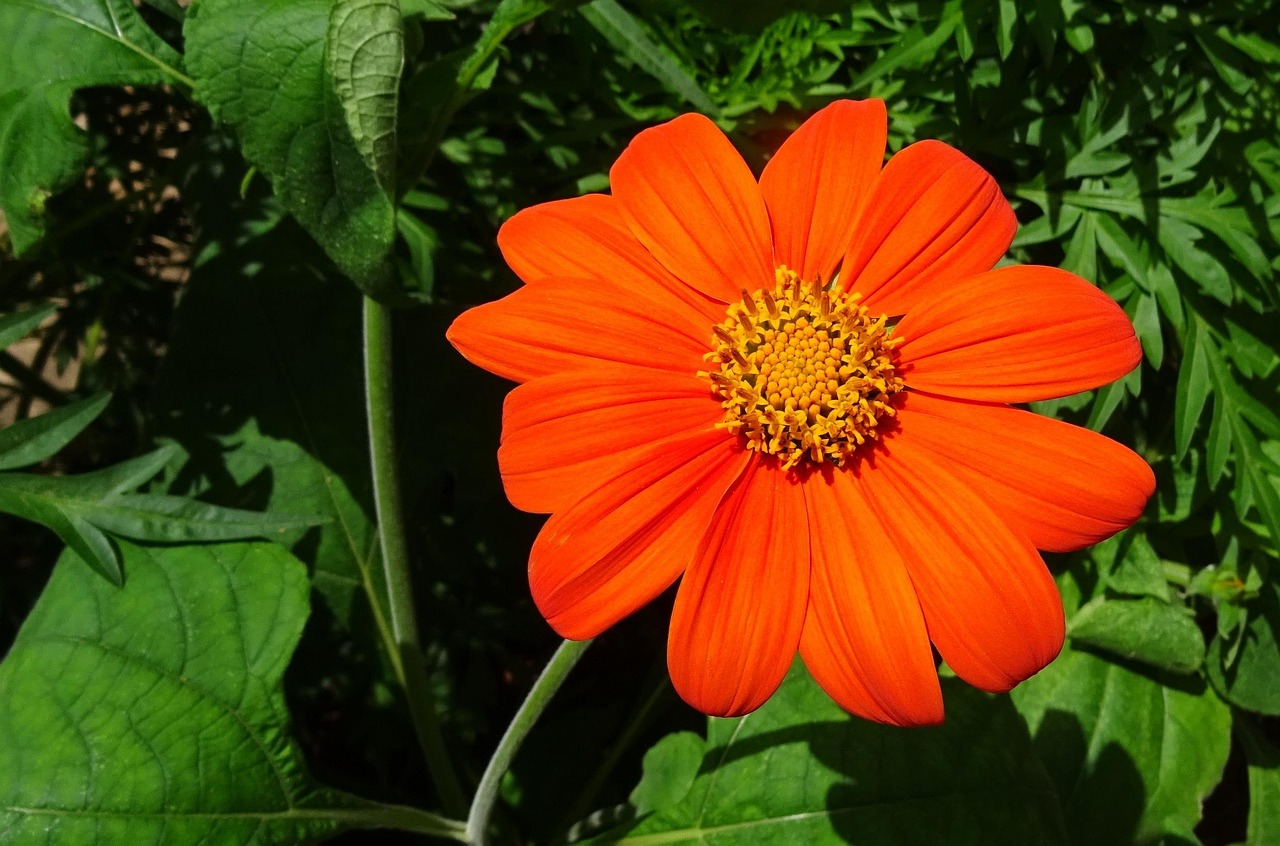
The Butterfly Magnet You Didn’t Know You Needed
This vibrant annual is a late-season lifeline for pollinators, especially monarchs fueling up for migration. Its fiery orange blooms stand tall and bold.
What Makes It Special
- Blooms right up to frost
- Attracts butterflies, bees, and hummingbirds
- Makes a statement in garden borders
How to Grow
- Full sun is essential
- Plant after the last frost and enjoy all season
- Stake taller varieties for wind protection
